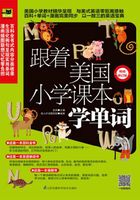
Are They Insects?它们是昆虫吗?
 I-3 / 003
I-3 / 003
Are They Insects?

Read each passage. After each passage you will answer a question about the main idea of the passage. Remember, the main idea is the main point in a story.
I. Mayflies are insects. They begin life underwater. As they grow older, mayflies leave the water and grow wings. When their wings are strong, they fly with thousands of other mayflies near the water. You can often see them by ponds. They look like a dark cloud hanging over the water.
1. The story mainly tells ______________ .
A. why mayflies have no wings
B. what looks like a cloud
C. about the life of mayflies
D. how mayflies grow on land
II. Some butterflies lay their eggs on just one kind of plant. By tasting the plant, they know which one is right. Sometimes butterflies taste the wrong plant, so they fly to another plant and taste again. When they find the right plant, they lay their eggs there. Soon the eggs hatch. The hungry babies eat the plant their mother chose!
2. The story mainly tells ______________ .
A. when baby butterflies come out of eggs
B. how butterflies choose where to lay eggs
C. what flies from one plant to another
D. how butterflies always taste the right plant

III. Centipedes are not insects, but they look like insects. They are long animals with short legs. Centipede means “hundred feet,” but centipedes have 350 legs! Millipedes also have many legs. Millipede means “thousand feet,” but they have about 700 legs!
3. The story mainly tells _____________ .
A. how many legs centipedes and millipedes have
B. what kind of animal a centipede is
C. that centipedes have one hundred legs
D that millipedes have one thousand legs
IV. A fly has six feet. Each foot has a plump little pad on the bottom. The pads flatten out when the fly walks on a smooth surface. They give off a sticky liquid that holds the fly to the wall or the ceiling. The liquid acts like glue so that the fly doesn't fall.
4. The story mainly tells __________ .
A. how many legs a fly has
B. about the fly's special feet
C. how flies make glue
D. about different types of flies
V. Many people don't like bugs. Some bugs bite or sting people. Other bugs eat people's plants and fruits. People poison bugs to get rid of them. Now scientists are finding new ways to kill bugs with germs. The germs make the bugs sick, and then they die. Scientists also use bugs to fight the other bugs. The ladybug is an example. It eats bugs that hurt fruit.
5. The story mainly tells ____________ .
A. poison is not the only way to get rid of bugs
B. people need to stay away from ladybugs
C. most bugs like to eat fruit trees
D. the germs make the bugs stronger
必背词汇



译 文
它们是昆虫吗?
阅读各个段落,然后回答每段的大意。记住,大意就是故事的重点。
I. 蜉蝣是一种昆虫,它们在水中出生。长大后,蜉蝣便离开水面,并长出翅膀。当它们的翅膀变得强壮时,便和其他成千上万的蜉蝣一起在水边飞。你经常能在池塘边看到它们,那场景看起来就像一片悬浮在水面上方的乌云。
1. 这个故事主要告诉我们 _____________ 。
A. 蜉蝣为什么没有翅膀
B. 什么看起来像乌云
C. 蜉蝣的生活
D. 蜉蝣在陆地上如何生活
II. 有些蝴蝶只会在一种植物上产卵。通过品尝植物,它们就能知道哪种植物适合产卵。有时蝴蝶尝试过后,发觉这种植物不适合产卵,就会飞到另一株植物上继续尝试。当它们寻找到了适合的植物,就会在那儿产卵。卵很快孵化,饥饿的蝴蝶幼虫就会吃妈妈为它们挑选的植物!
2. 这个故事主要告诉我们 ______________ 。
A. 蝴蝶幼虫在什么时候出生
B. 蝴蝶如何选择产卵地点
C. 什么东西会在植物间飞来飞去
D. 蝴蝶怎样才能总是品尝到适合的植物
III. 蜈蚣不是昆虫,但它们看起来像昆虫。它们身长足短。蜈蚣意为“一百只脚”,但实际上它们却有350只脚!千足虫也有很多只脚。千足虫意为“一千只脚”,但实际上它们仅有约700只脚!
3. 这个故事主要告诉我们 _____________ 。
A. 蜈蚣和千足虫各有多少只脚
B. 蜈蚣属于哪种动物
C. 蜈蚣有一百只脚
D. 千足虫有一千只脚
IV. 一只苍蝇有六只脚,每只脚的底部都有一小片鼓起的肉垫。当苍蝇在光滑的表面上平稳地爬行时,肉垫就会拉平。它们会分泌出一种粘液,使苍蝇能停留在墙壁或天花板上。这种液体就像胶水一样,使苍蝇不会掉下去。
4. 这个故事主要告诉我们 _______________ 。
A. 一只苍蝇有多少只脚
B. 苍蝇特殊的脚
C. 苍蝇怎样分泌胶水
D. 不同种类的苍蝇
V. 许多人不喜欢虫子。因为一些虫子会咬人或叮人,而另一些虫子则会吃人们种的植物和水果。人们用毒药来除掉它们。现在,科学家正在寻找新的方法—用细菌来杀死小虫子。这些细菌会使虫子得病致死。科学家也会用一些虫子去对付其他虫子。瓢虫就是一个例子,它会吃掉损害水果的害虫。
5. 这个故事主要告诉我们 _______________ 。
A. 毒药不是消灭虫子的唯一方法
B. 人们要远离瓢虫
C. 许多虫子喜欢吃果树
D. 细菌使虫子更加强壮
答 案
1. C 2. B 3. A 4. B 5. A